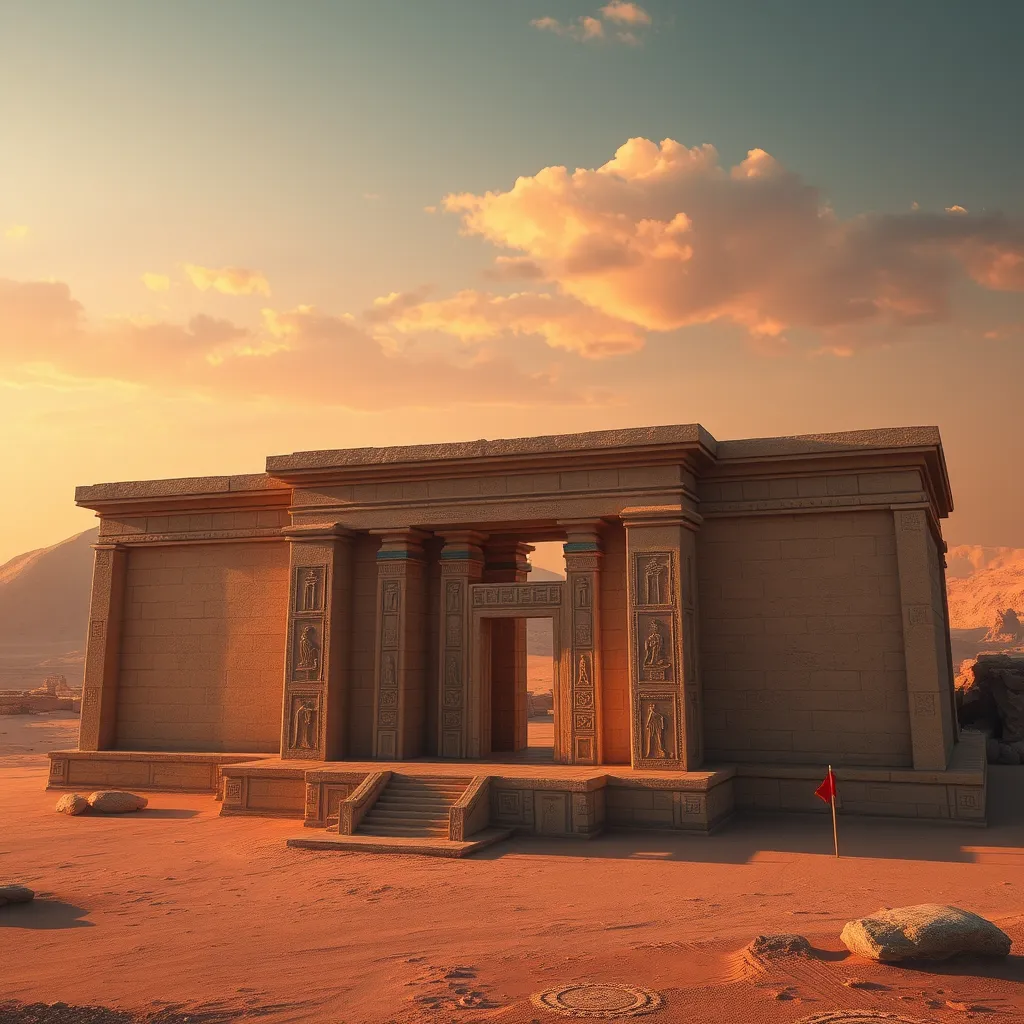The Duat: A Place of Healing and Reconciliation
I. Introduction
The Duat is a complex and multifaceted concept within ancient Egyptian mythology, representing the realm of the dead and the afterlife. In this mystical land, the souls of the deceased embark on a transformative journey, facing trials and tribulations before achieving a state of peace and enlightenment. The significance of the Duat extends beyond mere existence after death; it embodies the processes of healing and reconciliation, allowing souls to confront their past and emerge renewed.
This article aims to explore the Duat as a realm of healing and reconciliation, delving into its mythological context, symbolic meanings, and its relevance both in ancient times and today.
II. The Mythological Context of the Duat
The Duat plays a pivotal role in Egyptian cosmology, acting as the intermediary space between the world of the living and the afterlife. It is often depicted as a dark and mysterious landscape filled with obstacles, deities, and trials that souls must navigate.
- Key Deities: Two of the most significant deities associated with the Duat are Osiris, the god of the afterlife, and Anubis, the god of mummification and the guardian of the dead. Osiris is seen as the judge of the dead, while Anubis guides souls through their journey.
- The Journey of the Soul: Upon death, the soul enters the Duat, where it must traverse various challenges and face the judgment of its deeds in life.
III. The Symbolism of Healing in the Duat
Healing and rebirth are central themes within the Duat, signifying the purification of the soul and its readiness to enter the realm of the blessed.
- Purification and Rebirth: The Duat is often seen as a place where souls undergo purification, shedding the burdens of their earthly existence to be reborn into a new state of being.
- Rituals and Practices: Various rituals were performed by the living to aid the deceased in their journey through the Duat, ensuring they were equipped with the necessary knowledge and protection.
- Heart Weighing Ceremony: One of the most significant events is the weighing of the heart, where the deceased’s heart is weighed against the feather of Ma’at, symbolizing truth and justice. A lighter heart indicates a life of virtue and the prospect of eternal rest.
IV. Reconciliation with the Past
The Duat serves as a space for souls to confront their past actions, providing an opportunity for reconciliation and redemption.
- Confronting Actions: Souls must face the consequences of their deeds, allowing them to reflect on their choices and seek understanding.
- Judgment and Forgiveness: In the Duat, judgment is not merely punitive; it also offers a chance for forgiveness, enabling the deceased to reconcile with their past.
- Stories of Peace: Numerous myths illustrate how souls find peace and healing in the Duat, transforming their experiences into lessons for the living.
V. The Duat in Art and Literature
The Duat has been depicted extensively in ancient Egyptian art and literature, showcasing its rich symbolism and cultural significance.
- Artistic Depictions: Tomb paintings, carvings, and artifacts often illustrate scenes from the Duat, highlighting the journey of the soul and the various deities involved.
- Literary Representations: Texts such as the Pyramid Texts and the Coffin Texts contain vivid descriptions of the Duat, detailing the challenges faced by the deceased and the divine beings who assist them.
- Modern Interpretations: Contemporary adaptations of the Duat continue to explore its themes of healing and reconciliation, influencing literature and art today.
VI. Comparing the Duat to Other Mythological Realms
When examining the Duat, it is insightful to compare it with other cultures’ afterlife concepts, such as the Greek Hades or Norse Hel.
- Similarities: Like the Duat, both Hades and Hel serve as realms for the dead, filled with challenges and encounters with deities.
- Unique Aspects: Unlike many afterlife realms, the Duat emphasizes healing and reconciliation, allowing for a transformative journey rather than simple judgment.
- Impact of Comparisons: These comparisons enhance our understanding of the Duat, revealing universal themes of mortality and the desire for redemption.
VII. Contemporary Relevance of the Duat
The lessons of the Duat resonate in contemporary society, influencing modern spiritual practices and perspectives on healing.
- Influence on Spiritual Practices: Many modern spiritual movements draw inspiration from the concepts of the Duat, focusing on healing, forgiveness, and the journey of the soul.
- Lessons for Society: The themes of healing and reconciliation present in the Duat serve as a reminder of the importance of confronting our past and seeking forgiveness in our lives.
- Legacy in Popular Culture: The Duat continues to inspire literature, film, and art, emphasizing its enduring impact on human consciousness.
VIII. Conclusion
In conclusion, the Duat represents a profound space of healing and reconciliation within the framework of ancient Egyptian mythology. Its significance extends beyond the afterlife, inviting reflection on our past actions and the possibility of rebirth and forgiveness.
As we navigate our own lives, the themes of the Duat encourage us to seek healing and understanding, reminding us that reconciliation is a vital part of our human experience. In contemplating the lessons of the Duat, we find pathways to healing and connection within ourselves and with others.





